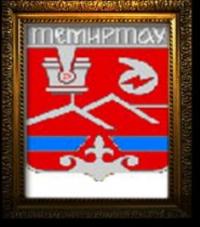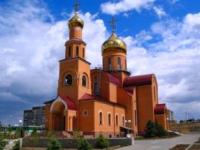Вы здесь
Town of Temirtau.



Tour in Temirtau.
“Popular culture is a place where pity is called compassion, flattery is called love, propaganda is called knowledge, tension is called peace, gossip is called news, and auto-tune is called singing”
Criss Jami, Killosophy.
Sights of Temirtau.
Temirtau (from Kazakh - Temіrtau) is a city in Kazakhstan, located in the Karaganda region. Since July 20, 1988, the village of Aktau appears in the subordination of the city. The name of the city is translated from the Kazakh language as "Iron Mountain".
Another popular name of the city is “Kazakhstan Magnitogorsk”. Samarkant is the central estate of the Leninsky state farm. The original name of the city is Temirtau. The village of Samarkant began to be settled since 1906, and on February 10, 1909 received the right to independent rural administration.
Settled in the first years by German immigrants, the village incorporated the basics of two words: “Samar” - the former homeland of immigrants and “Kant” meaning a settlement. By this, residents emphasized that they are Samarkant.
At the same time, the translation from the Turkic word “samar” as “bowl, vessel” conveys to us the motive of an old legend, when dense birch forests grew in the Nura floodplain, and the inhabitants were engaged in the manufacture of wooden bowls.
Both names reflect the fact that the main city-forming element is the largest full-cycle metallurgical production in Kazakhstan (and one of the largest in the world). The city-forming element is the largest metallurgical production in Kazakhstan, ArcelorMittal Temirtau JSC.
1905, June 15 - the first 40 families of immigrants for the Stolypin reform arrived on the road from Samara and settled on the left bank of the Nura River in the Akmola district of the Akmola region of the Russian Empire. From the words "Samar" and "Kant" (in Kazakh - sugar) the name of the place (Samara plus sugar) came from - Samarkant.
1909 - the village of Zahur was renamed to Samarkant.
1911 - the first school and hospital were built.
1921 - the village of Samarkant became part of the Akmola province of the Kyrgyz Autonomous Soviet Socialist Republic, an autonomous republic formed in 1920 as part of the RSFSR (after 1925, the Kazak Autonomous Soviet Socialist Republic as part of the RSFSR).
At the end of the 1920s, a geological expedition headed by the famous Kazakhstan geologist Kanysh Satpayev visited this area. No minerals were found here, but the documents concluded as follows: "The area of the village of Samarkant, by nature itself is intended to become the center of ferrous metallurgy in Kazakhstan in the future." This became a fateful event for the history of the city.
1928 - Samarkant village became part of the Karaganda region of the Akmola district of the Kazak Autonomous Soviet Socialist Republic - an administrative-territorial unit formed from parts of the Akmola and Semipalatinsk provinces (after the abolition of all districts of the Kazak Autonomous Soviet Socialist Republic and districts at the end of 1930, they were transferred directly to the republican authorities, in 1931 the Karaganda the district was renamed the Telman district of the Kazak Autonomous Soviet Socialist Republic).
1932 - the village of Samarkant became part of the Telman region formed on March 10 of the Karaganda region of the Kazak Autonomous Soviet Socialist Republic (from February 1936 - the Kazakh Autonomous Soviet Socialist Republic as part of the RSFSR, and after December 1936 - the Kazakh Soviet Socialist Republic as part of the Soviet Socialist Republic).
1933 - to ensure the development of the Karaganda coal basin, the Samarkant - Karaganda water canal was built.
1934, February 10 - the city of Karaganda was formed from the settlements of the Telman region that arose on the territory of the construction of the state trust for the operation of the Karaganda coal basin. Among other settlements included in the new city was the village of Samarkant, which received a new name - the village of Samarkant in the city of Karaganda.
In 1935, the village of Samarkant received the status of a city. The new city was called Temirtau, because it received a ticket to the life of the Kazakh Metallurgical Plant, which is popularly known as Kazakhstan Magnitogorsk. At the Iron and Steel Works, Nursultan Nazarbayev, the assistant steelmaker, began his career.
1938 - there was a division of the city of Karaganda into districts, initially there were three of them: Leninsky (now part of the Kazybek bi district), Stalin and Kirov (now part of the Oktyabrsky district) - the village of Samarkant is included in the Kirov region.
1939 - a dam was erected on the Nura River (20 meters high, 300 meters wide). The filling of the newly formed Samarkant reservoir, which lasted until 1961, began on the site of the old cattle cemetery.
1942 - the first turbine of the Karaganda state district power station was launched. The construction of the GRES building was started in 1934.
1943 - A synthetic rubber plant began operations.
1944 - The Kazakh Metallurgical Plant under construction gave the first steel. Melting was carried out in an open-hearth furnace.
1945, October 1 - from the Kirovsky district of Karaganda, the working village of Samarkant was allocated, which received the status of a city and the name Temirtau.
The first settlers appeared here at the very beginning of the XX century, the status of the city and its current name - in 1945.
1947 - 1949 - Japanese prisoners of war are detained in a camp near the city.
1950 - Karaganda Metallurgical Plant (KarMetKombinat, KMK) was founded. The Government of the USSR announced the start of the All-Union strike construction, many youth strike groups from all over the Soviet Union, and even from allied countries (mainly from Bulgaria) began to come to the city.
1959 - riots and uprisings among workers, extremely dissatisfied with poor living conditions, they were not resettled in new homes, they gave housing to the newly arrived "socialist brothers" from Bulgaria, which was caused by numerous mistakes of the KVM administration.
1960 - blast furnace No. 1 gave the first smelting of cast iron.
1963 - The VTUZ plant (formerly the Karaganda Metallurgical Institute, now the Karaganda State Industrial University) was established on the basis of the Karaganda Polytechnic Institute and the KarMetKombinat.
1970s - a new sports complex was built, which includes a 50-meter swimming pool "Dolphin" (now "Zhastar"), a stadium with 15,000 seats and an indoor ice palace.
1971, January - the city was awarded the Order of the Red Banner of Labor.
1972 - The Palace of Culture of Metallurgists was opened, a music school, a pedagogical school, chemical-technological and construction technical schools are working. There are 31 comprehensive schools in the city (five of them are teaching in the Kazakh language), three children's music schools, a children's art school, five libraries, a library of scientific and technical literature.
1974, April - The Monument to the Warrior at the Eternal Flame was unveiled, personifying the feat of the Temirtau soldiers who died in the Great Patriotic War (author - S. B. Nazaryan).
1978 - Vostok Culture and Leisure Park began work.
1984 - A new residential complex-quarter “Zenica” (now 70 quarter), so named in honor of the Yugoslav twin city Zenica, was erected.
Since July 20, 1988, Aktau is listed under the city.
1992, December 28 - Director General of the Karaganda Metallurgical Plant A. G. Svichinsky was killed on the threshold of a plant management. The murder caused a great public outcry, an exceptional measure of punishment was applied to the killers - execution.
1993, January - the Winter Garden was opened in the Vostok park.
1995 - KarMetKombinat transferred to Ispat International, and became known as Ispat-KarMet, hereinafter - Mittal Steel Temirtau, and since 2007 - ArcelorMittal Temirtau
2000 - Temirtau celebrates the 40th anniversary of cast iron smelting.
2005 - celebration of the 60th anniversary of the city of Temirtau.
2010 - celebration of the 50th anniversary of the Kazakhstan Magnitogorsk, the arrival of the President of the Republic of Kazakhstan N. A. Nazarbayev.
2011 - The Museum of the First President was built and opened. It is a three-level building, has a diameter of 48 m, height - 15.59 m, the total area of all rooms - 4526 square meters. m
2013 - Tram route 2 closed and rails dismantled.
Authority:
Book: “Modern Kazakhstan”, 2006, Almaty.
Photos
Alexander Petrov.







